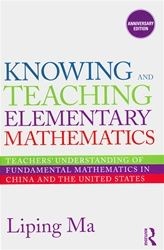Throughout my inputs in Discovering Mathematics, I’ve been thinking a lot about the links between maths are other curricular areas. I’ve been making connections more and more between maths and other subjects and, I have discovered something about maths that perhaps I hadn’t thoroughly thought about before… It is everywhere.
The idea to write a blog post centred around the fact that I am amazed elements of maths come in to everything, came from an idea I had to write an account reflecting on the connection between maths and one other particular topic which I knew linked and I had interest in. So, I started making a list and it went something like this…
- Maths and food;
- Maths and sport;
- Maths and the environment;
- Maths in literacy;
- Maths and music;
- Maths and dance;
- As well as the above, the connections between maths and all curricular areas is something I would like to explore further.
I looked back at this list and as I read over it, I realised one thing – that list would most probably never end. Why? Well, because everything we do, somehow connects to a way of mathematical thinking – numbers, time, money, patterns, sequences, routines, timetables, schedules, musical beats, distance, speed, shape… I could go on. Whether it is basic, simple, easy-to-understand fundamental maths, or even the more abstract concepts that challenge us to think, reflect and solve… It is everywhere.
I decided to look at her writings in an extract called ‘Learning together series’ (no date) where Carol Skinner wrote about maths, titled, ‘Maths is everywhere’. Carole Skinner is a former teacher, Maths Specialist in Early Years and a writer with the belief that teaching maths, learning maths and experiencing maths holistically should be an exciting for all learners. At her time teaching at Brunel University, London, she was a Numeracy Strategy Consultant and an Early Years maths lecturer. Upon reading ‘Maths is everywhere’, my understanding of where maths links in to other areas of learning became more profound. Carole Skinner suggests maths can be acquired, learned and developed more effectively if children have a good start in being confident with counting. She goes on to explain maths has involvement in the simplest of tasks. For example, changing the channel for the television, pointing at numbers on the clock after recognising that they are in fact numbers, and even saying things like, ‘1, 2, 3, boo!’ to babies, toddlers and young children (no date). On reflection of reading this, I realise that maths is not solely about addition, subtraction, equations and problems. I would argue that if we think deeper about where the fundamental maths is that these more challenging aspects stem from, we can identify the fundamental maths more recognisably.
- Understanding what numbers are – the fundamental maths in this is knowing that they are a way of keeping a count of the amount, quantity, value or measurement.
- Recognising a number when you see it – and knowing in what context the number is used and it’s meaning.
- Having ability to count – which, fundamentally, requires the learner to understand order, sequence and value; number patterns.
- Pairing socks or matching socks in the home environment – the basic maths in this is knowing that in order to have one pair of something, you must have two single items of the same, put together.
- Patterns and sequences – this can include in Art & Design; number patterns and sequences, which can entail having the ability to count and make calculations.
- Routines, schedules and timetables – to understand a routine, you would have to understand the time involved in structuring the routine; also incorporated in making plans on timetables and schedules.
- Keeping beats in music, songs, poems and dance – this entails having an awareness of timing, rhythm and regularity of beats in the tune, which most of the time – probably all of the time – entails the ability to count.
- Maths in the home – in weighing and measuring; cooking and baking entails many different aspects of fundamental mathematics combined and connected to each other; setting out cutlery for meals and knowing how many plates, knives, forks, glasses etc. to set out in accordance to how many people need them; having a fundamental understanding of volume, in order to be able to run bath water correctly; setting an alarm clock which requires an understanding of the basic maths of knowing numbers and calculating time; planning routines such as breakfast, lunch, dinner, television programme schedules and hobbies etc.
- Maths in the environment – environmental print can be largely beneficial to a learner’s developing understanding of fundamental mathematics and almost anything can be linked to maths.
- Classroom – in the classroom, things like arrangement of tables includes maths and knowing numbers, which effectively entails the ability to count; organising children into groups or pairs requires the children to have this understanding, if they are to manage this themselves, of quantity, number value, division calculations, counting and addition; reward charts; homework charts; diaries, schedules and timetables in school and in the classroom; also all curricular areas children are learning, I would argue, relate to fundamental mathematical principles in some way.
Gathering these ideas, on reflection, has also made furthered my awareness of how maths is all connected. To justify this, in order to know how to do or understand one thing in maths, you must have grasped and understood the basic maths behind it – the fundamental principles.
Carole Skinner has written for a number of publishing companies, including BBC. Her latest book is titled ‘Maths Outdoors’ and is available to order – https://www.waterstones.com/book/maths-outdoors/carole-skinner/9780904187434
References
Skinner, C. (no date) Early Education: Learning together series. London: British Association for Early Childhood Education. Available at:
https://www.early-education.org.uk/sites/default/files/Maths%20is%20Everywhere.pdf
Last Accessed: Nov 17 2015.


